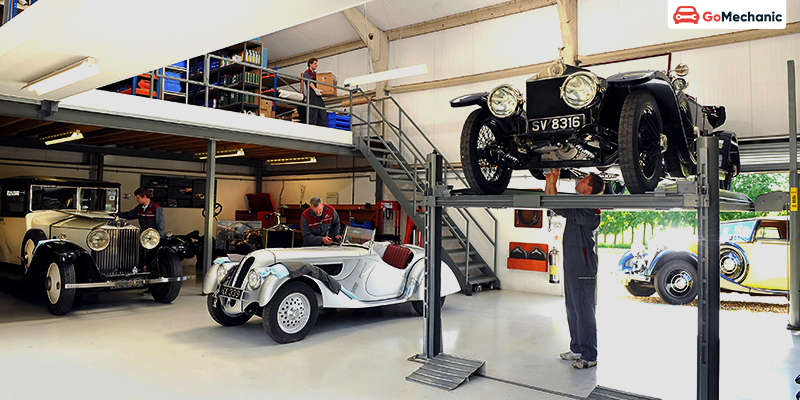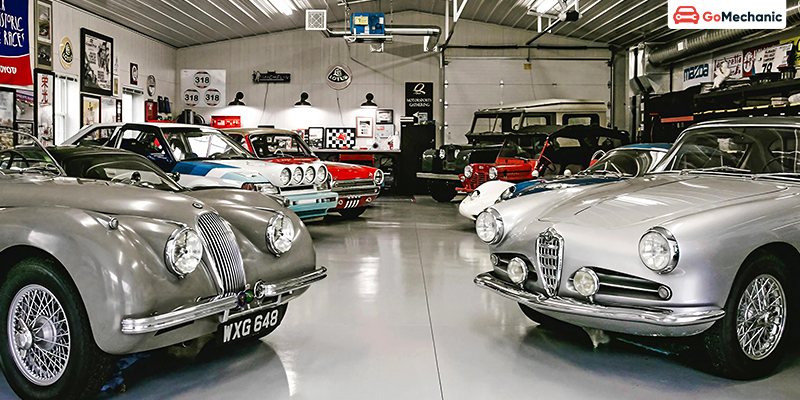Vintage and classic cars, adored for their timeless elegance, captivate enthusiasts in India and beyond. From the majestic Rolls-Royce to the agile Jaguar E-Type, they represent different automotive eras. Bollywood movies have boosted their popularity, adding to their allure. In essence, these cars are cherished reminders of automotive heritage and cultural significance. In recent years, India has seen a surge in interest in these iconic vehicles, reflecting a growing appreciation for automotive history and craftsmanship among enthusiasts nationwide.
Historical Significance of Vintage Cars
Vintage cars are like time machines, showing us how cars started without horses and changed into the cars we have today. They’re like old stories, filled with clever ideas and great craftsmanship from long ago.
Evolution of Automobiles in India:
- India’s automotive evolution mirrors its journey towards modernization and industrialization.
- From the late 19th century introduction of cars to mid-20th century domestic manufacturing, India has seen significant advancements in automotive technology, production, and infrastructure.
Role in Shaping Automotive Culture:
- Vintage cars globally symbolise luxury, prestige, and technological progress.
- In India, they inspire enthusiasts, collectors, and historians, fostering appreciation for automotive heritage and craftsmanship.
- Vintage cars contribute to automotive tourism, restoration industries, and enthusiast communities, enriching the cultural fabric of the country.
Preserving Automotive History:
- Preservation efforts ensure that vintage cars remain tangible reminders of automotive heritage for future generations.
- Restoration projects breathe new life into historic vehicles, maintaining their authenticity and significance.
- Museums, exhibitions, and enthusiast events play a crucial role in showcasing and celebrating automotive history and culture.
Restoring Vintage and Classic Cars

Restoring vintage cars is more than just a mechanical process; it’s an art form that requires skill, patience, and attention to detail. It involves bringing these iconic vehicles back to life, preserving their original beauty and historical significance for future generations to appreciate.
Process of Restoration:
Research and Documentation:
- Comprehensive research to understand the car’s history, specifications, and original features.
- Documentation of findings from historical records, original manuals, and other sources.
Mechanical Overhaul:
- Inspection, repair, or replacement of engine, transmission, brakes, and other mechanical components.
- Ensuring optimal performance, safety, and reliability through meticulous mechanical restoration.
Bodywork and Painting:
- Repairing rust, dents, and other damage to the car’s body panels.
- Skilled craftsmanship to reshape metal and ensure the body is in pristine condition.
- Meticulous preparation and painting to match the car’s original colour and finish.
Interior Refurbishment:
- Refurbishing or replacing upholstery, carpets, trim pieces, and dashboard components.
- Attention to detail to recreate the car’s original interior appearance.
- Restoring functionality and authenticity of the car’s interior components.
Challenges in Restoring Vintage Cars:
Sourcing Rare Parts:
- Difficulty in finding original or period-correct replacement parts due to limited availability.
- Searching through various sources such as salvage yards, online marketplaces, and specialised vendors.
Dealing with Rust and Corrosion:
- Addressing rust and corrosion issues on body panels, chassis, and mechanical components.
- Utilising techniques like sandblasting, chemical treatments, and metal fabrication to restore structural integrity.
Ensuring Authenticity:
- Balancing the desire for authenticity with the need for modern improvements and safety standards.
- Researching original specifications and features to maintain the car’s historical accuracy.
Incorporating Modern Improvements:
- Assessing the feasibility of integrating modern technologies without compromising the car’s vintage appeal.
- Upgrading components such as brakes, suspension, and electrical systems for improved performance and reliability.
Skilled Labor and Expertise:
- Finding skilled craftsmen and technicians with experience in vintage car restoration.
- Overcoming challenges related to complex mechanical systems and specialised techniques required for restoration.
Collecting Vintage and Classic Cars:
Passion for Collecting:
- Enthusiasts driven by a deep passion for automotive history, craftsmanship, and nostalgia.
- Desire to own and preserve iconic vehicles that represent a bygone era of automotive design and engineering.
Types of Collectors:
- Enthusiast Collectors: Individuals who collect vintage and classic cars purely for the love of automobiles and their historical significance.
- Investment Collectors: Collectors who view vintage cars as valuable assets and potential investments, seeking to profit from appreciation in value over time.
Challenges Faced by Collectors:
- Sourcing Authentic Vehicles: Difficulty in finding well-preserved, authentic examples of vintage and classic cars due to limited availability.
- Maintenance and Restoration Costs: High costs associated with maintaining, restoring, and preserving vintage cars in their original condition.
- Storage and Space Constraints: Challenges related to finding adequate storage space to house a growing collection of cars.
Value Appreciation and Investment Potential:
- Historical Significance: Vintage and classic cars often appreciate in value due to their historical significance, rarity, and cultural importance.
- Rarity and Exclusivity: Limited production numbers and unique features contribute to the collectability and investment potential of certain models.
- Market Demand: Growing interest among collectors and enthusiasts worldwide drives demand and increases the value of vintage and classic cars over time.
Building and Showcasing Collections:
Selection Process:
- Carefully choosing vehicles based on historical significance, rarity, and personal preferences.
- Researching and evaluating potential acquisitions to ensure authenticity and quality.
Acquisition Strategies:
- Exploring various channels such as auctions, private sales, and specialised dealerships to acquire desired vehicles.
- Networking with other collectors and enthusiasts to discover hidden gems and unique opportunities.
Restoration and Preservation:
- Investing in restoration efforts to bring acquired vehicles back to their original condition or desired specifications.
- Implementing preservation techniques to maintain the integrity and value of each car in the collection.
Display and Presentation:
- Designing and arranging display spaces to showcase the collection in an aesthetically pleasing and informative manner.
- Incorporating lighting, signage, and multimedia elements to enhance the viewing experience and tell the story of each car.
Engagement and Education:
- Hosting private viewings, events, and tours for fellow enthusiasts, automotive clubs, and the general public.
- Providing educational resources and information about the history, design, and significance of the cars in the collection.
Notable Vintage and Classic Car Collections in India

Explore India’s rich automotive heritage through a journey showcasing notable vintage and classic car collections scattered across the country.
Maharajas and Their Collections:
Royal Legacy:
- Highlighting the rich automotive heritage of Indian Maharajas, who were renowned for their extravagant car collections.
- Exploring the opulent tastes and preferences of Maharajas in acquiring and maintaining vintage and classic cars.
Historic Vehicles:
- Showcasing iconic cars owned by Maharajas, including Rolls-Royces, Bentleys, and classic Indian luxury brands like Hindustan Motors.
- Examining the historical significance and cultural value of these vehicles as symbols of royal prestige and power.
Private Collectors:
Enthusiast Collections:
- Featuring prominent private collectors in India who are passionate about vintage and classic cars.
- Exploring the diverse range of vehicles in their collections, spanning different makes, models, and eras of automotive history.
Personal Stories:
- Sharing anecdotes and personal stories from private collectors about their journey in acquiring, restoring, and preserving vintage cars.
- Discussing the motivations and inspirations behind their collections, as well as the challenges and rewards of ownership.
Museums and Exhibitions:
Curated Exhibitions:
- Highlighting notable museums and exhibitions in India dedicated to vintage and classic cars.
- Showcasing curated displays of historic vehicles, interactive exhibits, and educational programs for visitors.
Preservation Efforts:
- Discussing the role of museums and exhibitions in preserving automotive heritage and promoting cultural appreciation.
- Exploring initiatives to conserve and restore vintage cars for public display, ensuring their legacy for future generations.
Maintenance Tips for Vintage Car Owners:
Regular Inspections:
- Conduct visual inspections for wear, corrosion, and damage.
- Check for rust spots, leaks, loose fittings, and worn-out parts.
Proper Storage:
- Store in a dry, climate-controlled environment.
- Use breathable car covers to shield from dust and sunlight.
Gentle Cleaning:
- Clean with mild, non-abrasive cleaners and soft cloths.
- Use specialised products for vintage cars to maintain authenticity.
Lubrication and Fluid Checks:
- Keep moving parts well-lubricated with quality lubricants.
- Check fluid levels regularly and top up as needed.
Mechanical Maintenance:
- Schedule regular checks with experienced mechanics.
- Address engine tuning, brake adjustments, and suspension servicing promptly.
Preservation Techniques:
- Apply rust prevention treatments and undercoating.
- Use corrosion inhibitors and rust converters for existing rust spots.
Drive Carefully:
- Avoid harsh acceleration, abrupt braking, and excessive speed.
- Plan routes to avoid rough roads and hazards.
Documentation and Records:
- Maintain detailed maintenance records.
- Keep original manuals and service documentation.
Conclusion
Vintage and classic cars in India are cherished for their elegance and history. From Maharajas’ collections to private enthusiasts, they symbolise automotive heritage. Through preservation, restoration, and exhibitions, India honours their legacy. Enthusiasts ensure these treasures stay alive, maintaining their allure and significance in the automotive world.





